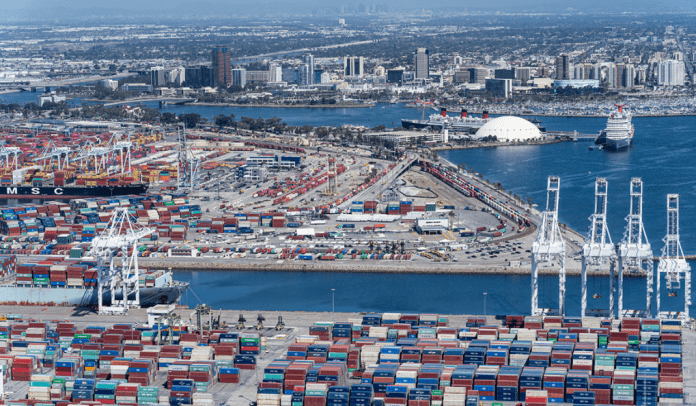The Ports of Long Beach and Los Angeles have voted for the further postponement of the “Container Dwell Fee” directed to ocean carriers for import containers that dwell on marine terminals.
The new fee will remain on hold until 6 December, while this is the third postponement of the container dwell fee.
The two Californian ports initially announced that the container dwell fee will be implemented on 1 November, but the progress they see on its terminals has led them to suspend it for 22, 29 November and now for 6 December.
Hence, with this policy which was initially developed in coordination with the Biden-Harris Supply Chain Disruptions Task Force, the US Department of Transportation and multiple supply chain stakeholders, the two busiest ports of the United States aim to further clean the marine terminals as a way to confront the port congestion.
Under the temporary policy approved on 29 October by the Harbor Commissions of both Californian ports, ocean carriers can be charged for each import container that falls into one of the two following categories:
In the case of containers scheduled to move by truck, ocean carriers could be charged for every container dwelling for nine days or more. Regarding containers moving by rail, ocean carriers could be charged if a container has dwelled for six days or more.
The San Pedro Bay Ports plan to charge ocean carriers in these two categories US$100 per container, increasing in US$100 increments per container per day until they leave the terminal, according to a statement.
Currently, no date has been set to start the count with respect to container dwell time. To reassess the fee implementation, the executive directors of both ports will monitor data for another week.
The West Coast Ports officials have noted that fees collected from dwelling cargo will be reinvested for programs designed to enhance efficiency, accelerate cargo velocity and address congestion impacts.
Before the pandemic-induced import surge began in the middle of 2020, containers for local delivery remained on container terminals under four days on average, while containers destined for trains dwelled less than two days.







